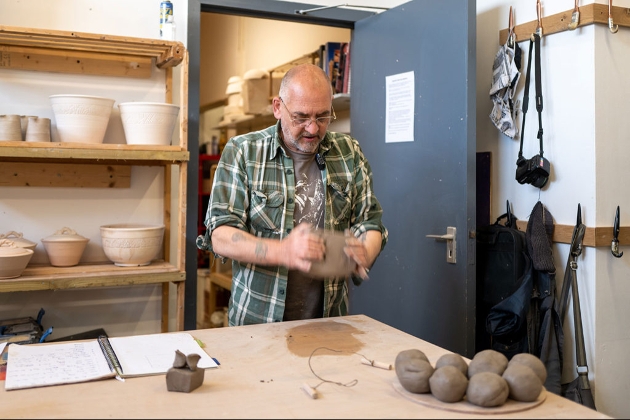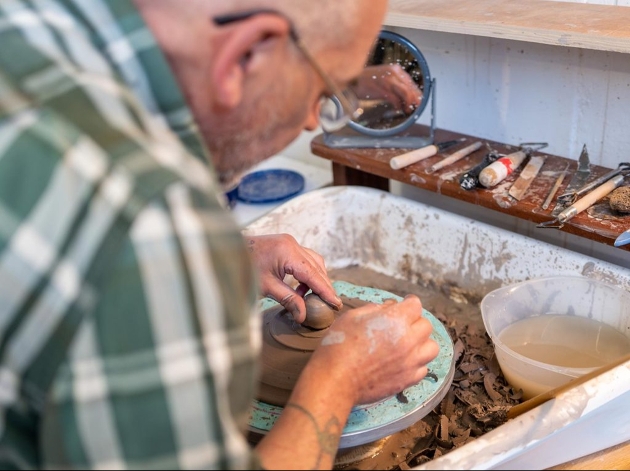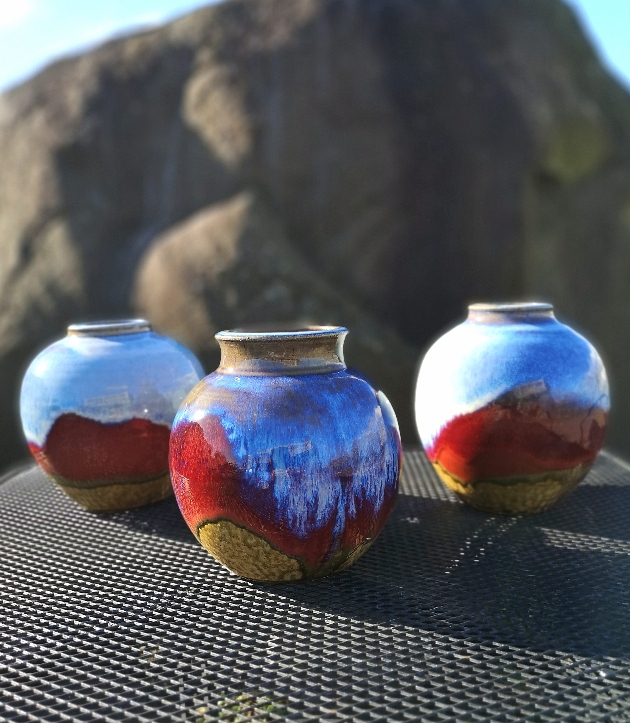Posted by Rachel Westall on 5 March 2024
The future of traditional pottery making is under threat from a combination of an ageing profession and environmental concerns over the use of gas and wood fired kilns. While pottery making has experienced a boom in recent years, particularly during Covid lockdowns when many people took it up as a hobby, traditional methods used for hundreds of years are in danger of dying out, according to professionals.

Lang, 64, a former musician who launched the Leith-based pottery as a community interest company in 2019, said: "Pottery makers are grappling with a growing environmental conundrum that has the potential to reshape their traditional craft. "I feel particularly vulnerable because the skills and processes I learned, and have practiced all my working life, appear to be dying out."

According to Lang, 64 – who has a bachelor's degree in ceramics from Duncan of Jordanstone College of Art, in Dundee – traditional practices are being maintained by a dwindling number of potters in their 60s and 70s, with few younger practitioners coming through. He said: "The decline is due to the phasing out of ceramics education in art schools around 30 years ago, that has left a knowledge gap and marginalised ceramics as a discipline. All the art schools stopped offering ceramics as part of their degrees. Fine art has always been funded and, while some areas such as graphic design have continued to be supported, ceramics fell out of favour."
He added: "An industry shift towards mass production has further sidelined traditional potters, and a lack of support for the ceramics industry has contributed to the diminishing tradition. The absence of educational opportunities and a dwindling number of skilled practitioners, mostly in their 60s and older, underscores the need for a new generation of potters to carry on the tradition."

He said: "Gas kilns are important in achieving specific finishes in pottery and, while some people argue for lower-temperature firing with electricity for energy conservation, this approach would eliminate many traditional techniques and styles. When you fire in an electric kiln, it produces a dry heat, and the atmosphere within the chamber is described as neutral or oxidising, but gas kilns offer reduction atmospheres that impact the colours in the glazes significantly."
He added: "Colours in ceramics are achieved through combinations of minerals and metal oxides. Copper, for example, creates greenish-blue tones in a neutral or oxidizing atmosphere, while it takes on entirely different colours in a reduction atmosphere. Building the glazes is as much a skill as the pottery-making itself. The balance of ingredients in the glaze is crucial to ensure the glaze shrinks and adheres to the pottery during firing."
As well as producing and selling a range of traditional pottery, Leith Community Pottery is a social enterprise offering free and donation-based classes for patients suffering from poor mental health, dementia, social isolation, and loneliness. It runs a series of workshops for people referred by healthcare workers, community link workers, third sector professionals and housing officers. According to Lang, the environmental case against gas fired kilns has never been made convincingly, but it has become accepted wisdom in some sections of the pottery industry that electric kilns are greener.
He said: "In comparing the respective carbon footprints of gas and electric kilns, it may be that electric are more damaging to the environment if the electricity is not renewably sourced. You might actually be using electricity that coal is being burned to produce. It's also the case that other industries contribute more to environmental issues. In the grander scheme of things, I think I'm going to do more damage to the environment next Monday when I get a flight for my holidays than firing my kiln."